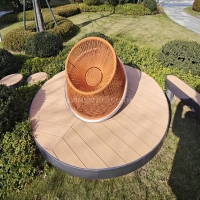Welcome to the website for landscape facilities products and knowledge.
How do landscape tables with integrated community gardens promote urban agriculture?
Landscape tables with integrated community gardens are transforming urban spaces into hubs of sustainability and social interaction. These innovative structures combine functional seating with gardening plots, enabling city dwellers to grow fresh produce while fostering community bonds.
By utilizing vertical and horizontal space efficiently, landscape tables maximize limited urban areas for agriculture. They provide accessible gardening opportunities for residents, including those without traditional yard space. The tables often incorporate composting systems, further closing the nutrient loop in local food production.
Community gardens integrated into public furniture promote food literacy and environmental awareness. They serve as educational platforms where neighbors share gardening knowledge and sustainable practices. This hands-on approach to urban farming increases appreciation for locally grown food while reducing food miles.
These multifunctional installations also enhance urban biodiversity by creating green corridors for pollinators. The combination of seating and gardening spaces encourages social interaction, making urban agriculture a communal activity rather than an isolated pursuit.
Municipalities benefit from reduced urban heat island effects and improved stormwater management through these green installations. As cities worldwide seek sustainable solutions, landscape tables with integrated gardens offer a practical model for merging urban design with agricultural productivity, proving that food production can flourish even in dense metropolitan areas.
Related search:

Recommendation
Swivel chair-Specialty steel structure woven rattan leisure chair with rotatable design